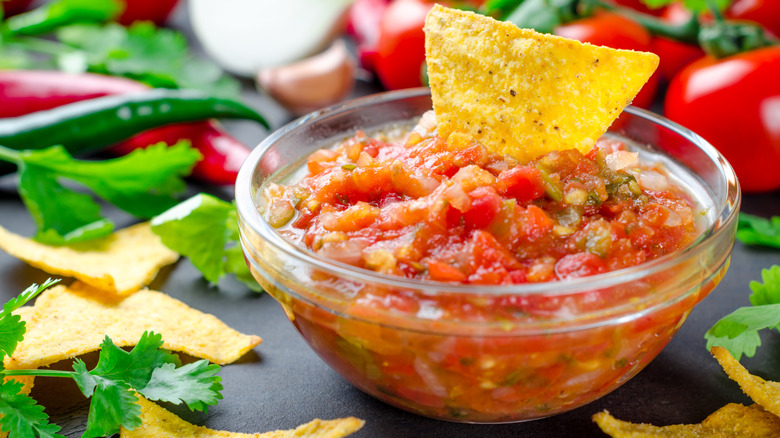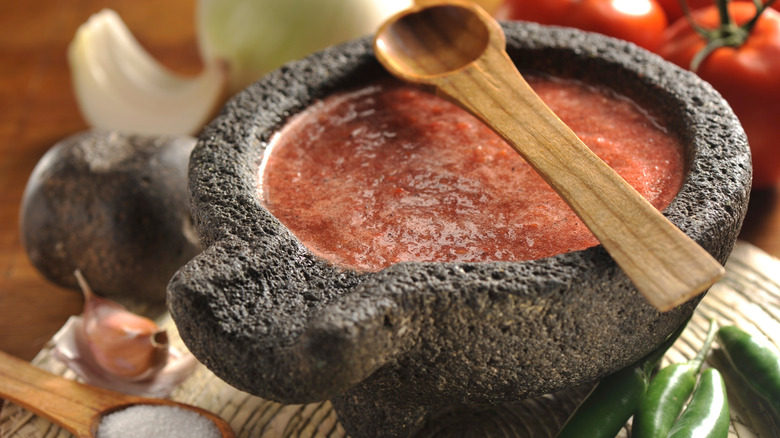Your Salsa Can Still Sing Without The Spice Using Clever Flavoring Techniques
We may receive a commission on purchases made from links.
Salsa has transcended its Mexican origins to become as all-American as can be, surpassing ketchup as the top-selling condiment in the U.S. more than three decades ago. Tortilla chips and salsa are as common at parties and get-togethers as pretzels and potato chips, with the jalapeño pepper leading the way on this familiar flavor profile. But there's no need to pass on salsa if you don't like spice. Jenny Martinez, best-selling cookbook author of "My Mexican Mesa, Y Listo!," shared some flavoring techniques with The Takeout for making delicious salsa without the heat.
"I like to add Mesa Mia's chicken bouillon because it adds charred garlic and onion flavor that takes your salsa to [the] next level," Martinez told us. "Also making salsa in a molcajete adds flavor without heat, as they are seasoned." Molcajetes are heavy mortar and pestles made of volcanic rock, used in Mexico for centuries, ever since the Aztecs and Mayans. Over time, a bit of the flavor of the ingredients mashed into them is absorbed, and the seasoned molcajete then imparts subtle flavor.
Martinez also shared the fruit you can add for a flavorful, non-spicy salsa, adding, "Mexican dragon fruit (pitaya) balances heat in salsa. I also like to use charred pineapple to add sweetness as well." You can also try oils, condiments, and mix-ins for an added boost. "I love using avocado oil to make a chile oil and mayo for a creamy spicy salsa," Martinez explained. "Throwing in seeds and nuts add flavor to salsa, like pumpkin seeds, sesame seeds, and peanuts."
Customizing your salsa is a Mexican tradition
Many Americans might think of salsa as the chunky, saucy mix of tomatoes, onions, jalapeños, and cilantro that you get with tortilla chips at restaurants, or buy in jars (like the popular store-bought salsas we ranked). But in Mexico, salsa isn't relegated to life as a dip for chips. Instead, salsa is used more like a sauce — which is what the word actually means in Spanish — and served with all kinds of food.
Salsa is also much more varied in Mexico, where it's made with all kinds of ingredients; not just swapping tomatoes for tomatillos to make salsa verde, but using different peppers, spices, herbs, and more. So shaking things up to replace the spice with other flavors fits in the Mexican tradition. Another customization could include replacing the jalapeño with bell pepper (Go green for a more vegetal flavor; or red, yellow, or orange for a sweeter pepper taste). You could also roast the tomatoes for more depth of flavor, or get some smokiness by blistering onions, bell peppers, or garlic along with your tomatoes. Try adding other types of fruit, as well, like watermelon and blueberries.
Even if you're buying jarred salsa from the store, you can get creative by exploring different ways to incorporate it into your meals. Make it the key to a veggie-packed meatloaf, for instance, or use Rachael Ray's tip for using the last of your salsa by turning it into salad dressing.

